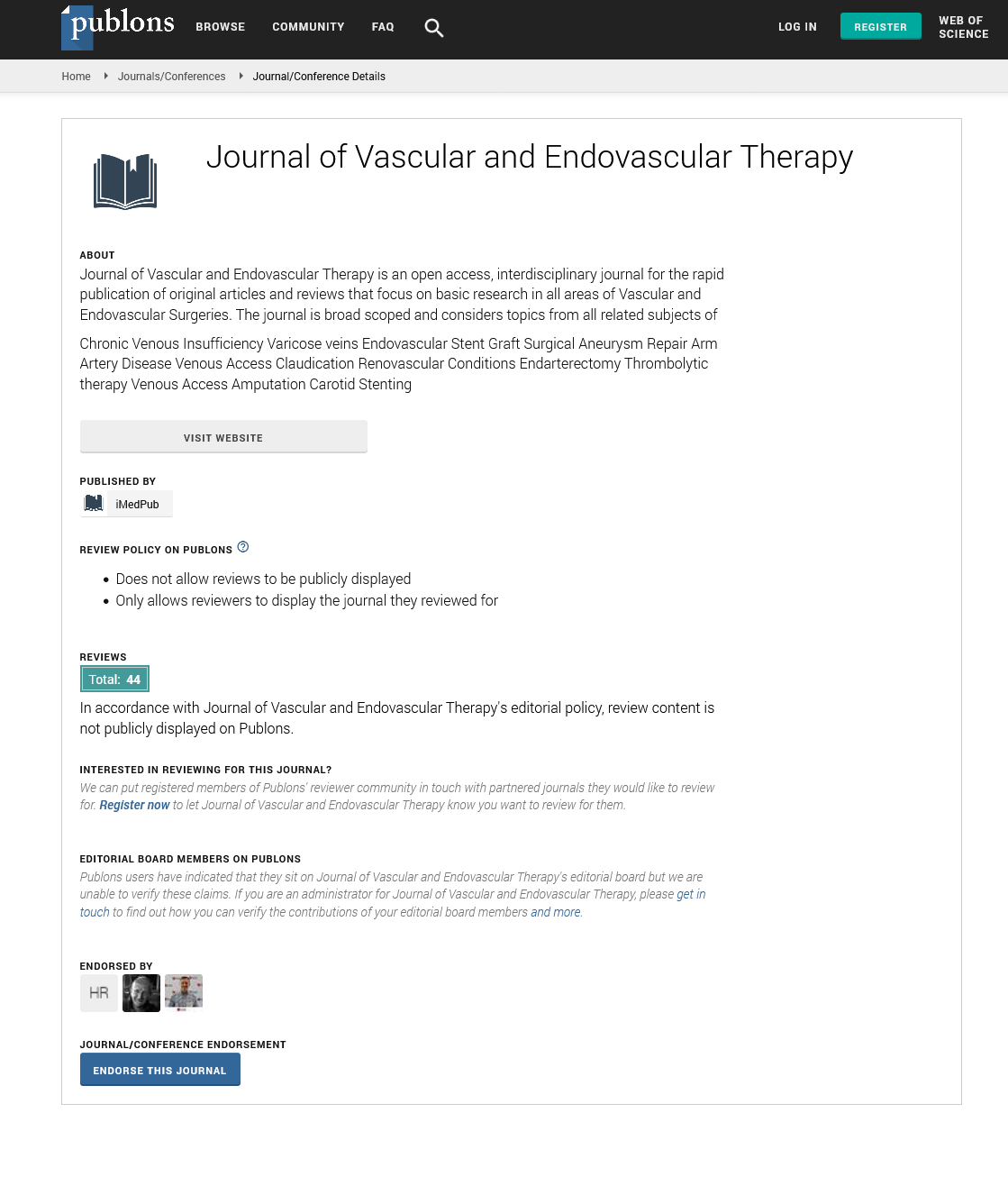ISSN : 2634-7156
Journal of Vascular and Endovascular Therapy
Statistical shape analysis of the right ventricular outflow tract in patients with tetralogy of Fallot
3rd Edition of World Congress & Exhibition on Vascular Surgery
May 24-25, 2018 London, UK
Stephane Couvreur, Agnieszka Nowacka, Benedetta Biffi, Jan Bruse, Gaetano Burriesci, Andrew Taylor, Claudio Capelli and Silvia Schievano
UCL Institute of Cardiovascular Science, UK Great Ormond Street Hospital, UK Vicomtech√£¬?¬ĀIK4, Spain Fondazione Ri.MED, Italy
Posters & Accepted Abstracts: J Vasc Endovasc Therapy
DOI: 10.21767/2573-4482-C1-003
Abstract
Tetralogy of Fallot (TOF) is the most common congenital heart disease with >80% of children expected to live beyond the age of 40. However, due to gradual loss of pulmonary valve function after initial surgical repair, resulting in severe pulmonary regurgitation (PR), TOF patients require frequent surgical revisions. To delay open heart surgery, a non-invasive percutaneous pulmonary valve implantation (PPVI) device was first introduced by Bonhoeffer et al. showing satisfactory clinical performance. However, morphology still limits PPVI eligibility. We focus on automatically defining the shape of the right ventricular outflow tract (RVOT) in TOF patients with PR late after surgical repair to assess the variations of anatomy and guide the design of new PPVI devices. TOF patients (n=59, age 25±15 years) referred to our centre for followup cardiovascular magnetic resonance imaging (MRI) between August 2007 and April 2017 were retrospectively selected for this study with inclusion criteria: i) steady-state free precession cardiac-gated 3D whole-heart images; ii) moderate to severe PR
(regurgitant fraction (RF) 39±10%); and iii) no metal artefacts. A statistical shape analysis (SSA) framework was used to calculate the principal component (PC) modes of shape variation in the population from unsupervised statistical learning. The first three PC modes accounted for 36% of the variance. Mode 1 was most correlated to BSA (r=0.66, p≤0.001) describing size differences, together with mode 2 (r=0.47, Figure 1 - representation of the principal modes of shape p≤0.001). Mode 2 revealed presence of a highly variation in the population enlarged pulmonary trunk whilst mode 3 described elongation of the vessel and correlated with vessel centerline length (r=0.57, p≤0.001). Mode 3 was inversely correlated with pulmonary RF (r=-0.43, p≤0.001). Advanced image processing and statistical shape analysis of the RVOT in TOF identifies features important to guide the design and optimization of new PPVI devices, benefitting the largest number of patients requiring a new valve. stephane.couvreur.13@ucl.ac.uk
Google Scholar citation report
Citations : 177
Journal of Vascular and Endovascular Therapy received 177 citations as per Google Scholar report
Journal of Vascular and Endovascular Therapy peer review process verified at publons
Abstracted/Indexed in
- Google Scholar
- Open J Gate
- Publons
- Geneva Foundation for Medical Education and Research
- Secret Search Engine Labs
Open Access Journals
- Aquaculture & Veterinary Science
- Chemistry & Chemical Sciences
- Clinical Sciences
- Engineering
- General Science
- Genetics & Molecular Biology
- Health Care & Nursing
- Immunology & Microbiology
- Materials Science
- Mathematics & Physics
- Medical Sciences
- Neurology & Psychiatry
- Oncology & Cancer Science
- Pharmaceutical Sciences
